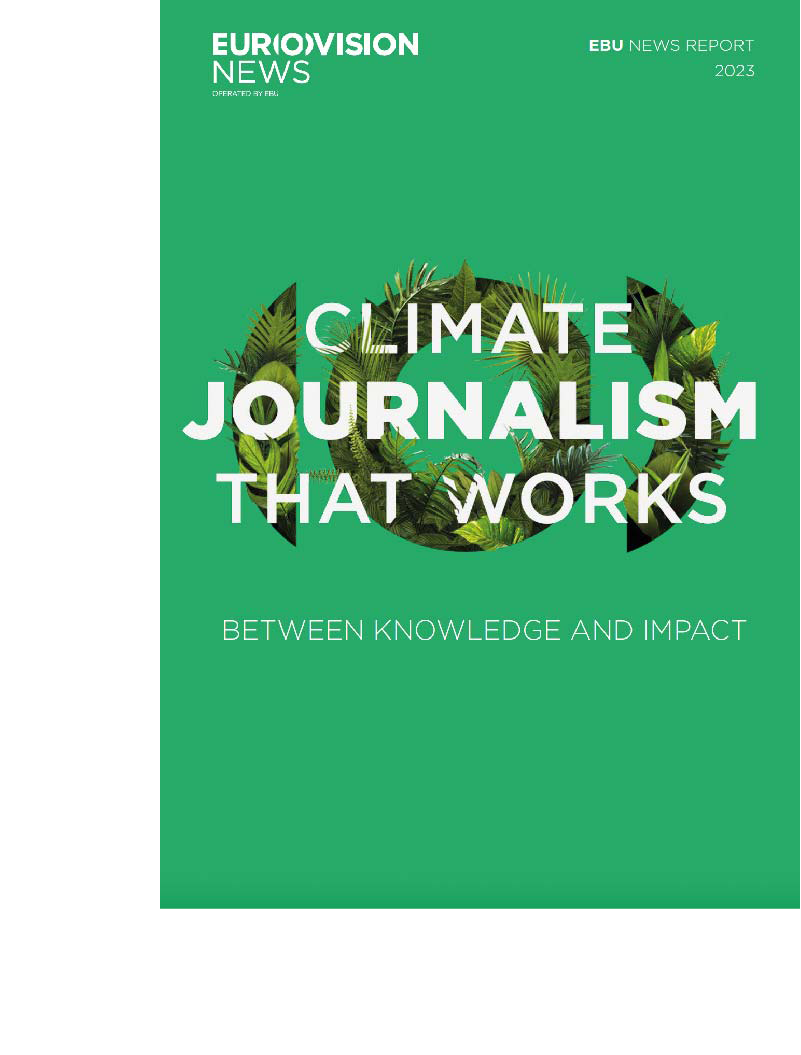For the longest time, most newsrooms felt they were doing an okay job covering climate change.
They would go all out when reporting on potentially climate-related disasters, cover conflicts about energy, highlight what happened at the big conferences like COP27. But then again, they might not have been so sure. In the 2022 Reuters Institute’s “Journalism, Media, and Technology Trends and Predictions” that is a non-representative international media leaders survey, 65% of respondents judged their own organization’s climate coverage as good, but only 34% felt that the industry as a whole was doing a good job with it. This gap in perception clearly revealed there were second thoughts, consequently room for improvement. As the warnings of scientists about a heating atmosphere intensify but audience engagement tends to lag behind expectations, many news organizations in 2023 will decide that their climate coverage needs a serious upgrade. And this requires a climate journalism and sustainability strategy.
It is badly needed. While the issue of global warming has been out in the open for decades, the media until recently hasn’t been too eager to jump on the topic — with the notable exception of The Guardian, which has been able to connect a climate strategy with the needs of its audiences and its membership-driven business model. The reasons for the industry-wide reluctance were manifold: climate change is a complex, slowly moving topic that doesn’t lend itself to capture audience attention for longer stretches of time in a news-driven environment. Reporting on it in a way that resonates with users requires scientific skills, time and thus considerable resources. And it is depressing, risking to drive people into news fatigue. Furthermore, in many countries it had evolved into a politically polarizing issue, making it necessary for newsrooms to rebut accusations of taking sides.
But things have been moving in recent years. Editors-in-chief have graduated from calling it “one of the defining issues of our age” (Alessandra Galloni, Reuters) to “perhaps the century’s biggest story” (Sally Buzbee, Washington Post). In 2022, large organizations expanded their climate coverage capacities considerably, sometimes with the help of external funders. In September National Public Radio established a new climate desk. In November the Washington Post announced to triple their climate team to 30 people. And these are just current examples from the U.S. Assistance from networks like the Oxford Climate Journalism Network, Covering Climate Now, and the Earth Journalism Network has been sought after.
Still, consistent climate strategies that are openly communicated and implemented throughout organizations are rare. Some examples: Norway’s public service broadcaster NRK developed one that establishes the role of climate coverage in the newsroom and how (not) to report on it. Radio France in 2022 published a strategy that includes a massive training program for all of editorial and sustainability guidelines for the organization. And French news agency AFP created its “future of the planet hub.” These are important role models, because while smaller players won’t have the capacities to establish hubs or desks, they will closely watch what happens in the industry and draw consequences that fit their individual context and needs.
A full-blown climate strategy makes good sense for several reasons beyond the obvious. Here are five:
First, engagement with climate issues needs to pick up, and this will only happen with excellent journalism that fits different audiences’ needs.
Second, younger, educated audiences are likely to be invested in the issue, and news organizations need to attract younger generations. So, this is a business opportunity.
Third, climate change needs to advance from topic to frame, gaining relevance in every beat to become more subtle and less one-off alarmist.
Fourth, comprehensive newsroom training is vital to make everyone climate literate, help them to apply it to their particular field, and to detect greenwashing.
Fifth, an editorial climate strategy cannot exist in a vacuum, it needs to be linked to an organization-wide sustainability strategy to maintain credibility.
At some point in the future, the absence of a climate journalism strategy might be a similar kind of negligence as the absence of a digital strategy. (Credit goes to Wolfgang Blau, who helped to elevate the issue to this level throughout the industry in recent years. For more, watch or read the lecture he gave as a co-founder of the Oxford Climate Journalism Network: https://reutersinstitute.politics.ox.ac.uk/calendar/climate-change-journalisms-greatest-challenge.) Hopefully, this will help media organizations, citizens, and the planet alike.
This piece was written for and published by Niemanlab at Harvard University in the context of the 2023 prediction series.



